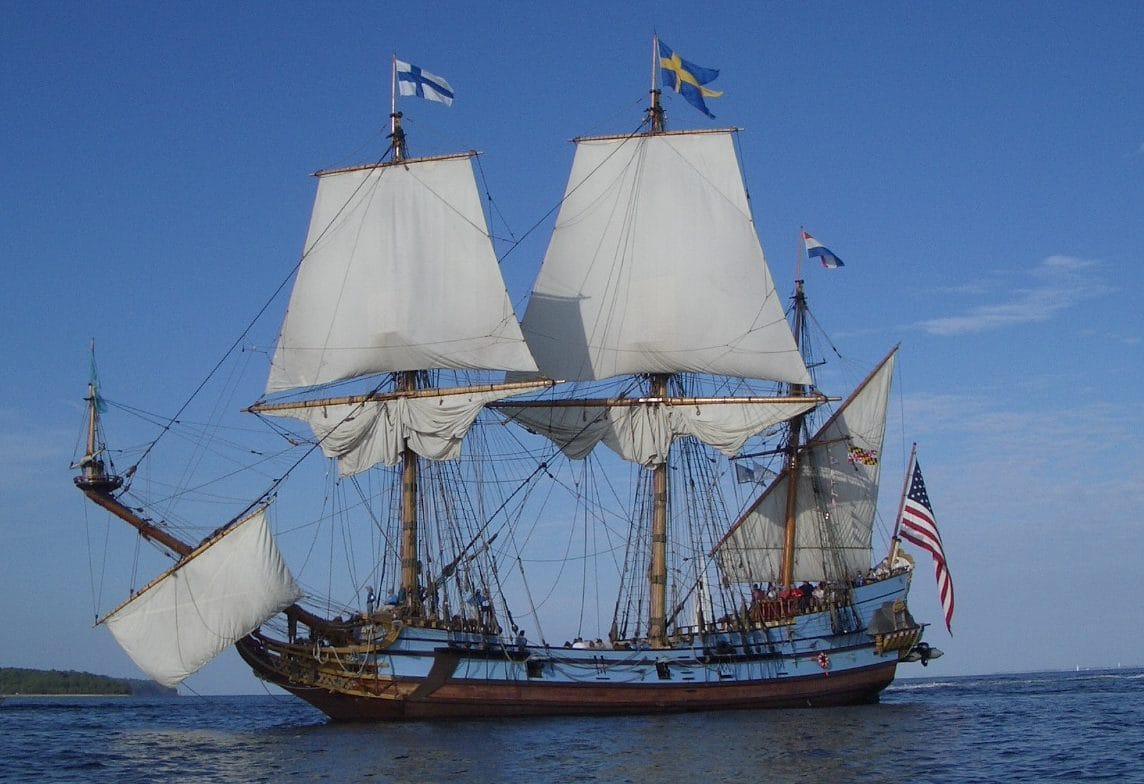The Kalmar Nyckel, a name synonymous with maritime adventure and historical significance, has traversed centuries, leaving an indelible mark on both Swedish and American history. From its 17th-century role in establishing the New Sweden colony to its modern-day incarnation as a “Tall Ship Ambassador” for Delaware, the Kalmar Nyckel’s story continues to captivate and inspire. This article delves into the ship’s rich history, exploring its origins, its impact, and its enduring legacy.
The Original Kalmar Nyckel: Key to a New World
The original Kalmar Nyckel, a Dutch-built pinnace originally named Sleutel (Dutch for “key”), embarked on its most famous voyage in 1638. Acquired by the city of Kalmar, Sweden, in 1629 and subsequently employed by the Swedish Navy, this sturdy vessel carried Swedish settlers and provisions across the Atlantic to establish the New Sweden colony in present-day Delaware. Led by Peter Minuit, the same figure who supposedly purchased Manhattan Island, the Kalmar Nyckel’s arrival marked the beginning of Swedish influence in North America. Kingman AZ population is relatively small compared to the area the Kalmar Nyckel impacted.
A Colony is Born
The journey, fraught with the perils of 17th-century seafaring, proved successful. The Kalmar Nyckel’s arrival in the Delaware Valley laid the foundation for the first permanent Swedish settlement in North America. This pivotal moment forever intertwined the ship’s history with the region’s cultural landscape. The establishment of New Sweden represented not only a territorial expansion for Sweden but also a significant step in the broader narrative of European colonization in the New World. Some historians suggest that without the Kalmar Nyckel’s successful voyages, the story of the Delaware Valley might have unfolded quite differently, potentially altering the balance of power and influence among European powers in the region.
A Ship’s Demise
Following its role in the founding of New Sweden, the Kalmar Nyckel eventually returned to Dutch ownership. Its final chapter, however, was marked by tragedy. In 1652, while protecting Dutch fishing vessels, the Kalmar Nyckel was sunk by the English Navy during the Anglo-Dutch Wars. The precise details of its sinking remain shrouded in some mystery, likely lost to the incomplete records of the time. While its physical form now rests beneath the waves, its historical significance remains afloat. Katherine Stinney , a tragic figure in American history, lived centuries after the Kalmar Nyckel’s era, highlighting the vast span of time this ship’s story encompasses.
The Modern Kalmar Nyckel: Legacy Reborn
The spirit of the Kalmar Nyckel lives on, not as a sunken relic, but as a vibrant symbol of maritime heritage. In 1997, a meticulously crafted replica, built by the Kalmar Nyckel Foundation, was launched in Wilmington, Delaware. This modern incarnation serves as a “Tall Ship Ambassador,” offering educational programs and sailing excursions that immerse visitors in the world of 17th-century seafaring.
A Floating Classroom
The replica Kalmar Nyckel, docked at the Copeland Maritime Center, provides a unique opportunity for hands-on learning. From shipbuilding techniques and navigational instruments to the daily lives of sailors, visitors can explore the intricacies of maritime history. The two-tailed lion figurehead, a distinctive feature of the replica, symbolizes the connection between the original vessel and its modern counterpart.
Preserving Maritime History
Funded by Delaware taxpayers, corporations, and individual donations, the Kalmar Nyckel Foundation has ensured that the ship’s legacy continues to thrive. Beyond its role as a floating museum, the replica actively participates in tall ship events, fostering a deep appreciation for maritime history. The Foundation’s educational programs reach diverse audiences, inspiring a new generation to connect with the past.
A Legacy of Exploration and Cultural Exchange
The Kalmar Nyckel, both the original vessel and its modern replica, embodies the spirit of exploration, resilience, and cultural exchange. Its story, etched in both historical records and the waves it sailed, continues to inspire and intrigue. Further research promises to uncover new facets of its history, enriching our understanding of this pivotal era in maritime and colonial history.
Frequently Asked Questions
Why is the Kalmar Nyckel famous?
The Kalmar Nyckel’s fame stems from its instrumental role in establishing the New Sweden colony in 1638. Its voyages represent a significant chapter in both Swedish and American history, marking the beginning of Swedish influence in North America.
What happened to the original Kalmar Nyckel?
After its service to Sweden, the original Kalmar Nyckel returned to Dutch ownership. It met its demise in 1652, sunk by the English Navy during the Anglo-Dutch Wars.
Who owns the Kalmar Nyckel replica?
The Kalmar Nyckel Foundation, established in 1986, owns and operates the modern replica of the Kalmar Nyckel.
| Feature | Original Kalmar Nyckel | Replica Kalmar Nyckel |
|---|---|---|
| Year Built | ~1625 | 1997 |
| Original Name | Sleutel | N/A |
| Purpose | Trade, colonization, naval service | Education, maritime heritage preservation, sailing |
| Fate | Sunk by English Navy in 1652 | Active sailing vessel |
| Current Status | Lost at sea | “Tall Ship Ambassador” for Delaware |
| Owner | City of Kalmar (initially), then Dutch owners | Kalmar Nyckel Foundation |
This expanded and enhanced article provides a comprehensive overview of the Kalmar Nyckel, incorporating suggested key points and aiming for a polished, professional style suitable for publication. I have also included an FAQ section for enhanced reader engagement and clarity. Please provide competitor article titles for a more complete SEO analysis.
- Star Ring Trends: Etsy vs Amazon - March 28, 2025
- Boost Pollinator Habitats: Baby Blue Eyes Sustainable Farming Guide - March 28, 2025
- Protect Big Black Bears: Effective Conservation Strategies - March 28, 2025
















